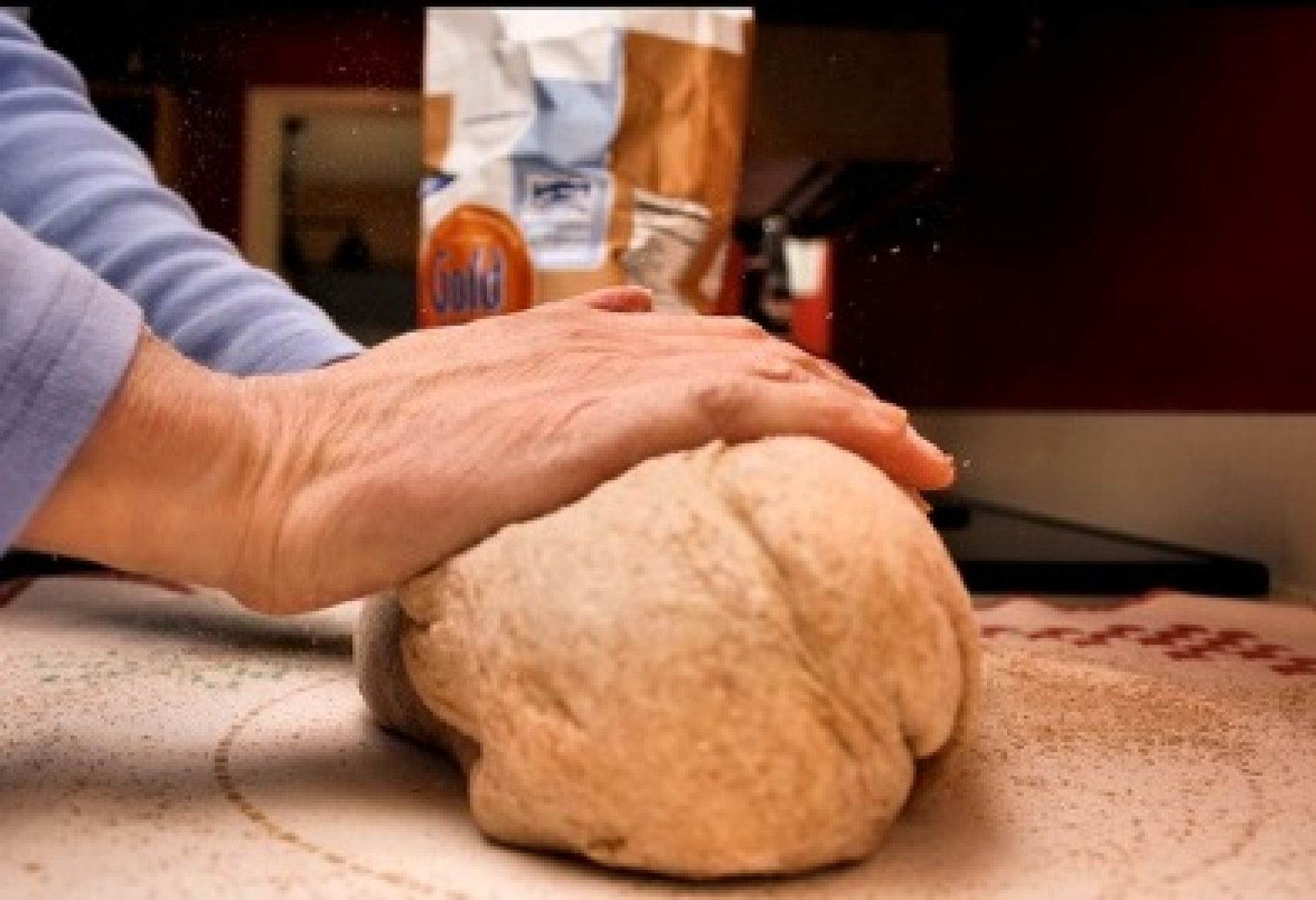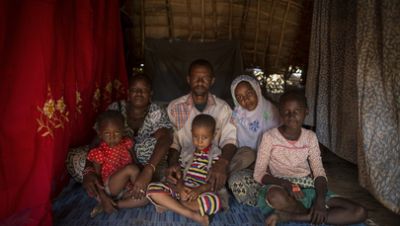Imagine for a moment that you are a baker. Now what would be on your list of essentials for an ultimate, everyday bread recipe? Flour would probably be at the top of your list. A liquid, to act as a binding agent. And heat.
Let us stop there for now. “But what about yeast?” you may insist. Indeed for the French, a baguette would be unthinkable without yeast. Yet yeast is not the only leavening agent – the Irish have bicarbonate of soda for their soda bread, and the Indians do not require leavening at all for rotis or chapatis, the commonest of flatbreads. Even those universal essentials – flour, liquid and heat – can be combined using differing proportions, methods and ingredient variations to produce a unique final product; and depending on where we come from and our own individual taste, we’ll each have different preferences over which we find most appealing.
And so it is with well-being. In fact each of us is a baker with our own particular recipe for the good life. Just as “daily bread” is a concept understood – in similar but subtly different ways – by just about everyone around the world, so too is the notion of well-being.
Recognising that we can only understand and manage what we measure, there has been a growing interest over the past 30 years in constructing a measure, or measures, of societal well-being that can influence policy and public debate. Indeed this interest is also reflective of an ‘industry’ that has grown out of the original Human Development Index (HDI), and its more inclusive approach to human development in general. A deluge of different indicators and measures have been proposed, yet none has achieved pre-eminence over GDP as the yardstick of progress. The HDI has perhaps come closest thanks to its success in distilling three key ingredients of human progress – income, health and education – that are universally accepted by the global community. The popularity of the HDI demonstrates that finding common ground is essential to garnering wide acceptance.
Crucially however, I believe that a measure of well-being must also acknowledge that different people, from different cultures and with different characteristics, have differing views of what makes for a good life. The aim of a policy-maker should be to ensure that we all have enough of the essential ingredients of well-being, in the combinations that our recipes require to satisfy our own preferences. The aim of the statistician should be to measure how close we are to that goal. But would it ever be possible to construct a measure of human well-being that both made interpersonal and international comparisons, and took account of different views about development? At this point, arms may be thrown up in protest by the statistically-minded at the prospect of making comparisons using a yardstick that is allowed to change its composition. But let us not forget that, in actual fact, the makeup of GDP is far from identically specified across countries. It is only the final denomination, the dollar-value, which can be compared like-for-like.
Last year I was fortunate to a pay an extended research visit to Professor Marc Fleurbaey of Princeton University. He, along with a small group of Franco-Belgian colleagues, has been quietly pioneering a new approach to well-being measurement in recent years, one that places heterogeneous preferences at its heart. They call it “equivalent income” and it has its origins in social choice theory. The basic idea involves mapping out people’s preferences over various dimensions of life, and allowing for the shape of this map to vary from person to person. For instance, take a retiree and a young person – even if both had the same overall well-being, each might be willing to trade health for income, and vice versa, at differing rates, and in turn trade these for education at differing rates again. The aim then is to uncover the basic components in how we each, differently, generate well-being, and then to logically distil the outcomes of that process into a summary measure. Now policy-makers need to understand the process of well-being generation in order to make their recommendations, but it is the simple summary measure that holds the key to dethroning GDP. This, I believe, comes close to the “recipe” method for a well-being measure.
What about using happiness or “subjective well-being”? Subjective well-being is becoming a stronger contender (and can actually play an essential part in computing equivalent income), but has shortcomings that prevent it from being accepted across the board as a summary measure. Perhaps most critical is its susceptibility to masking “physical condition neglect”. As Amartya Sen has illustrated, “A person who is ill-fed, undernourished, unsheltered and ill can still be high up in the scale of happiness or desire-fulfilment if he or she has learned to have ‘realistic’ desires and to take pleasure in small mercies” (Sen, 1985, p.21). Equally, someone who has adapted to high aspirations and expensive tastes can still be dissatisfied with life, as exemplified by Carol Graham’s “miserable millionaire” paradox. The thing is, measuring subjective well-being would be like counting the loaves of final product – a relevant exercise, but without specifying the recipe for their composition or making explicit their differences. A basic loaf (the happiness of the ill-fed person) may be counted the same as a decadent buttery chocolate brioche loaf (the happiness of the millionaire), though we know from the ingredients they are quite different.
Extending the bread-making analogy just a little further, let us compare our proposed “recipe” method of well-being accounting with the front-runner, GDP. Measuring GDP would be like measuring the amount of money we have to buy ingredients (or otherwise), with no stipulation as to whether what we buy is good for the bread-making task. With GDP we could just as well be spending the money on sawdust filler as a cheap adulteration strategy, or on cleaning products for clearing up spilled flour and burnt bread.
In the inventory and handbook of composite well-being measures that I compiled as part of my internship with the Human Development Report Office, I detailed a 101-recipe collection of disparate well-being measures with as many different sets of ingredient lists, methods and flavours. The impasse in the quest for a pre-eminent alternative measure of progress is testament to the fact that each proposed measure captures a different set of priorities. Perhaps it is time we embraced these differences by embracing a measure of well-being that is capable of moulding to our overlapping but heterogeneous conceptions of well-being. What matters is to understand where these differences arise, and then maybe we’ll have a shot at a pluralist revolution in the meaning of progress.
Lin is a doctoral researcher at the London School of Economics and a keen experimental baker. She is currently writing about an index approach to multidimensional well-being measurement with heterogeneous preferences, and can be contacted at l.yang10(a)lse.ac.uk
References:
Sen, A. (1985), Commodities and Capabilities, North-Holland, Amsterdam.
An introductory reference to the equivalent income approach can be found in Chapter 3 of:
Decancq, K. and Schokkaert, E. (2013), “Beyond GDP: Measuring social progress in Europe”, https://www.kuleuven.be/euroforum/viewpic.php?LAN=E&TABLE=DOCS&ID=857
A good all-round read about existing approaches to well-being measurement and equivalent income in particular can be found in:
Fleurbaey, M. and Blanchet, D. (2013), Beyond GDP: Measuring welfare and assessing sustainability, Oxford University Press, Oxford.
Photo by Phil Roeder
The HDialogue blog is a platform for debate and discussion. Posts reflect the views of respective authors in their individual capacities and not the views of UNDP/HDRO.


